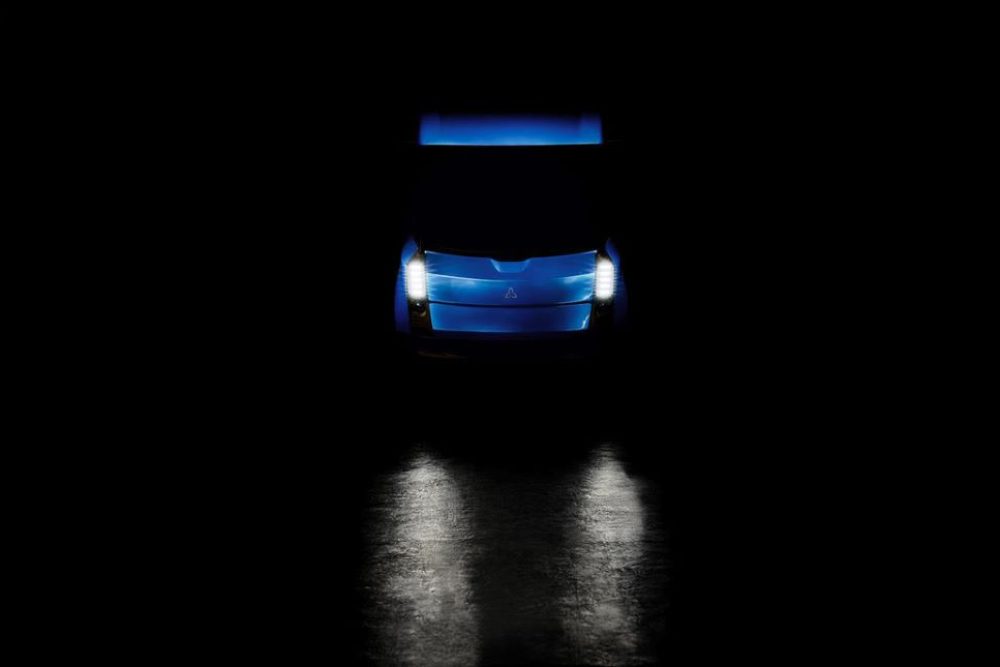WATT Electric Vehicle Company (WEVC) has announced a partnership with ETRUX, an electric commercial vehicle specialist, that is set to accelerate the adoption of next-gen electric light commercial vehicles – with the first prototype debuting at April’s CV Show.
Following the signing of an MoU between the two companies, the collaboration will see WEVC’s game-changing electric vehicle platform technology adapted by ETRUX into a range of offerings for the commercial vehicle market. To underline the intent of the relationship, ETRUX will be exhibiting an engineering prototype, based on WEVC’s Watt eCV1 3.5-tonne cab and chassis unit (codenamed eCV1 in development), on its stand at the CV Show, complete with an in-house-designed body.
The CV Show will be the first chance to see the functional prototype, which will be continuing test and development activities directly after the event. Designed for production of up to 5000 vehicles per annum, WEVC’s innovative and highly flexible 3.5-tonne cab and chassis unit enables a wide range of electric commercial vehicle designs, facilitating mission-specific models which meet customers’ particular fleet requirements.
Neil Yates, Chief Executive of WEVC said: “This is an exciting time for WEVC as we take the first steps in seeing our electric commercial vehicle platform adapted for a wide range of applications and uses.”
ETRUX Chief ExecutiveO Gerard Galvin added: “The eCV1 prototype is really exciting, as it gives us the freedom to create vehicles that meet our customers’ needs more than ever before. With this platform, which has been designed to be electric from the ground up, we don’t have to work around the compromises that the industry traditionally faces, especially with electric vans derived from diesel bodies.
“WEVC’s platform really does bring advantages with such an incredible payload to weight ratio, the safety and energy efficiency benefits of the central driving position and the flexibility of both standard and bespoke vehicle lengths and layouts they can offer us. We are delighted to have signed the MoU with WEVC and we look forward to this vehicle being a huge commercial success.”
WEVC’s Passenger And Commercial EV Skateboard (PACES) architecture is optimised to minimise weight, delivering class leading payload and reduced energy consumption for lower running costs.
Developed to support commercial vehicle manufacturers, specialist vehicle converters and fleet operators in the transition to an electric future, PACES complies with ISO regulations and exceeds stringent European Small Series Type Approval safety standards.
It’s ’cell-to-chassis’ system means batteries are integrated to the primary structure (rather than having a separate battery pack), thus optimising stiffness, minimising weight and maximising payload. As a result, the clean sheet design means the eCV1 has none of the structural, weight and packaging compromises inherent in the majority of electric LCV designs, many of which having been converted from internal combustion drivetrains and which are further constrained by traditional high-volume manufacturing processes.
The new platform enables an ergonomic cabin focused around a central driving position, always allowing easy kerbside exit for driver safety and one, two or three seat configurations. The prototype on the stand will demonstrate a representative two-seater layout, although the instruments and materials fitted for engineering development are not representative of final production specification.
As well as easing driver ingress and egress on either side, the central driving position gives excellent visibility further enhancing driver and other road users’ safety. Placing the driver in the centre of the vehicle also facilitates a smaller frontal area, which combined with the class-leading kerb weight delivers a highly energy efficient electric commercial vehicle.
The intrinsically lightweight PACES architecture results in a chassis cab with a kerb weight from just 1750kg, delivering class leading payload and range in the 3.5t and 4.25t segments.








